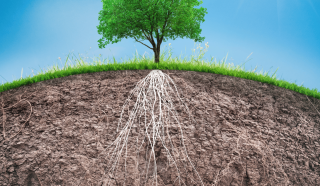If your trees and shrubs appear to be struggling or failing to thrive, it's time to consider a solution that can invigorate their health and vitality – deep-root fertilization. Fertilization serves as a life source for your plants, providing them with the essential ingredients necessary for robust growth. But deep-root fertilization is the method that truly shines when it comes to ensuring the well-being of your trees and shrubs in Delaware. We'll cover everything you need about deep-root fertilization for trees and scrubs.
How Is Deep Root Fertilization Different from Traditional Tree Fertilization?
Traditional tree fertilization typically involves spreading granular or liquid fertilizers around the tree's soil surface. While this method provides some nutrients, it has limitations. Tree roots can extend far beyond the drip line; many vital roots are deeper in the soil. Deep-root fertilization is designed to target these deeper roots directly.
Deep root fertilization is a process that delivers a high-quality, balanced nutrient solution directly to the root zone. This ensures that the tree receives the essential elements for growth and health. It's a more efficient and precise method compared to surface fertilization.
Do Your Trees Need a Deep Root Fertilization Treatment?
Whether your trees need deep-root fertilization is best made in consultation with an arborist.
However, some common indicators that your trees might benefit from this treatment include:
- Soil Compaction: If your soil is compacted due to foot traffic, heavy machinery, or construction work, it can hinder root growth and nutrient absorption.
- Nutrient Deficiency: Visible signs of nutrient deficiencies, such as yellowing leaves or stunted growth, indicate that your trees may need an extra nutrient boost.
- Poor Soil Quality: Trees growing in poor or depleted soils can significantly benefit from deep-root fertilization to enhance nutrient intake.
- Drought Stress: During prolonged dry periods, trees can struggle to access water and nutrients in the soil. Deep-root fertilization can help them cope with these challenges.
- Overall Tree Health: Regular deep-root fertilization can be a proactive approach to maintaining the overall health of your trees and preventing issues.
What Are the Benefits of Deep Root Fertilization Treatment for Trees and Shrubs?
Deep root fertilization offers several key benefits for trees and shrubs:
- Improved Nutrient Absorption: By directly delivering nutrients to the root zone, deep root fertilization ensures trees can absorb the essential elements they need more efficiently.
- Enhanced Growth: The increased availability of nutrients leads to improved growth, including more robust foliage, stronger branches, and a healthier root system.
- Resistance to Stress: Well-nourished trees are better equipped to withstand environmental stressors like drought, pests, and diseases.
- Increased Longevity: Regular deep-root fertilization can extend the lifespan of your trees, preserving their beauty and the ecological benefits they provide.
- Environmental Benefits: Healthy trees contribute to a cleaner environment by absorbing carbon dioxide and releasing oxygen.
How Is Deep Root Fertilization Done?
Deep root fertilization is a precise process that involves the following steps:
- Assessment: An arborist will evaluate your trees' nutrient needs, soil conditions, and overall health.
- Aeration: In cases of compacted soil, the arborist may use an air spade or similar equipment to loosen the soil around the roots, promoting better nutrient absorption.
- Application: A specialized tool injects a nutrient-rich solution directly into the root zone, ensuring the tree's roots receive the essential elements.
- Watering: To aid nutrient dispersion and promote root health, the area is typically watered thoroughly after the treatment.
When is the Best Time for Deep Root Fertilization?
The best time for deep-root fertilization typically depends on your location and the type of trees or shrubs you're treating. However, the ideal time in most regions is during the tree's active growing season. For many deciduous trees, this is in the early spring or late fall, while evergreens may benefit from treatments in the late winter or early spring.
It's essential to consult with an arborist from Strobert Tree Services to determine the most suitable time for deep-root fertilization based on your specific trees and local climate conditions.
How Often Do Trees Need Deep Root Fertilization?
The frequency of DRF will vary depending on the tree's species, age, and overall health. However, most trees will benefit from DRF every 1-2 years.
If you are considering DRF for your trees, be sure to consult with a certified arborist. They can assess your trees' needs and recommend the best fertilization schedule.
Contact Strobert Tree Services
For professional advice and expert deep-root fertilization services, don't hesitate to contact Strobert Tree Services. Our team of experienced arborists is dedicated to helping your trees and shrubs thrive, ensuring they continue to provide beauty, shade, and environmental benefits for years to come. Contact us today to discuss deep-root fertilization for your trees and invest in their health and longevity.











